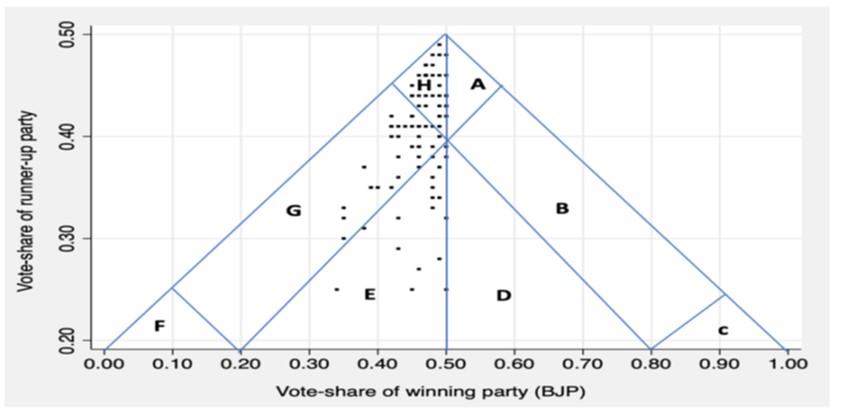


Journal of Contemporary Politics
DOI: 10.53989/jcp.v3i1.3
Year: 2024, Volume: 3, Issue: 1, Pages: 1-9
Original Article
Rekha Diwakar ✉ 1
1Senior Lecturer in Politics, Department of Politics, University of Sussex, BN1 9QE, Falmer, Brighton, UK
Corresponding author ✉ : [email protected]
Received Date:04 February 2024, Accepted Date:10 March 2024, Published Date:15 April 2024
The 2014 Lok Sabha election in India saw the BJP winning majority of seats with a relatively low national vote share of 31%. The BJP won another majority victory in the next Lok Sabha election in 2019 improving its tally of seats, but its vote share remained well short of majority at about 38%. Since the 2019 election, the party has won many state assembly elections and further strengthened its position as the dominant party at the national level. As we approach the 2024 Lok Sabha election, the Congress, the principal opposition party, and several other parties have initiated a major effort to forge electoral alliances with an objective of defeating the BJP. Using constituency level data, this paper provides an analytical perspective on the prospects and challenges for a united opposition to succeed in their efforts to counter the BJP. It finds that even if the opposition parties can put up a united front, it will not be easy to defeat the BJP in most of the seats the party won in 2014 and 2019. The paper concludes that the opposition parties would need both a high degree of unity and coordination across many states, as well as a significant vote swing against the BJP to have any chance of defeating it in 2024. Thus, it is doubtful whether merely forming an anti-BJP alliance, without a credible alternative narrative and policy agenda, can yield substantial electoral benefits for the opposition.
Keywords
BJP, Constituency Level, Elections, Opposition Unity, Party System, India
© 2024 Published by Bangalore University. This is an open-access article under the CC BY license (https://creativecommons.org/licenses/by/4.0/)
Subscribe now for latest articles and news.